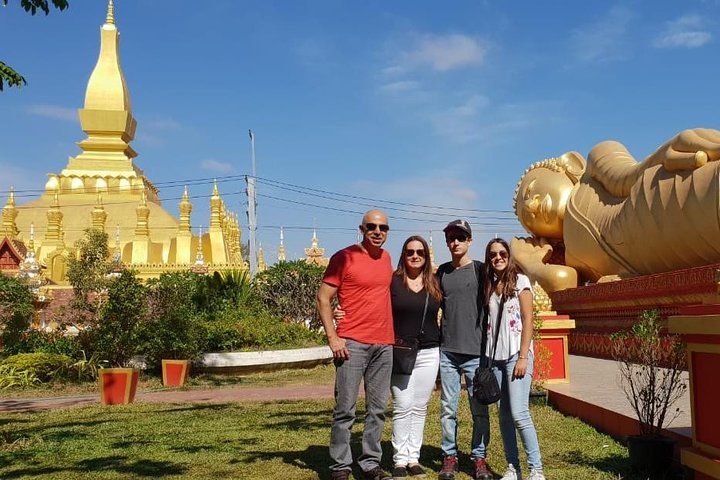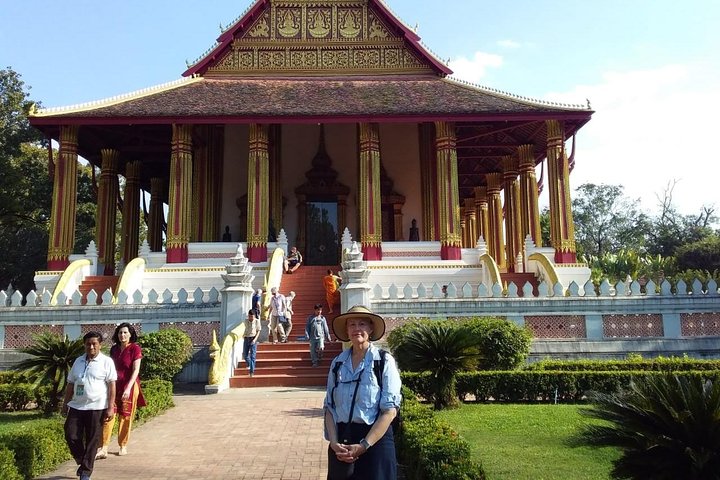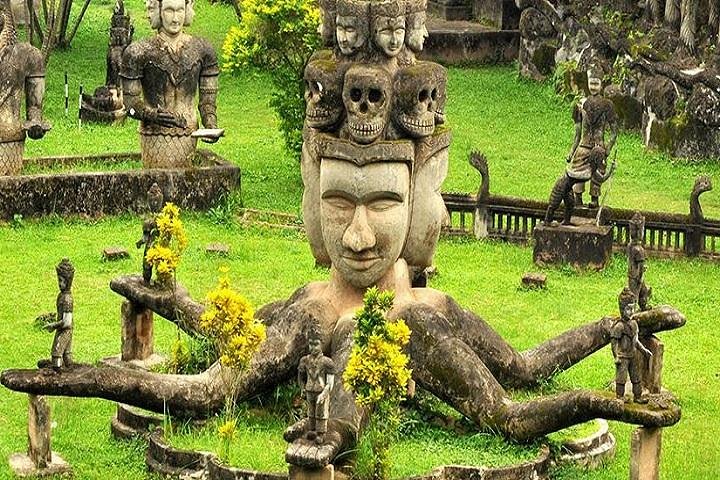Exploring Vientiane: A Chic Journey Through Laos’ Spiritual Heart
In search of a deeper understanding of Laos’ rich cultural tapestry, I embarked on a private city tour of Vientiane, eager to explore its historical and spiritual landmarks.
A Journey Through Time: Vientiane’s Historical Marvels
As I stepped into the vibrant streets of Vientiane, I was immediately enveloped by a sense of history and spirituality that seemed to whisper through the air. My guide for the day, Khong, greeted me with a warm smile and an infectious enthusiasm that promised an unforgettable journey. Known for his friendly demeanor and deep knowledge of the city’s heritage, Khong was the perfect companion for this exploration.
Our first stop was the Wat Sisaket temple, a place that exudes an aura of tranquility and reverence. As I wandered through the cloister walls adorned with over 6,800 Buddha statues, I couldn’t help but marvel at the intricate craftsmanship and the serene expressions of the statues. Khong shared fascinating stories about the temple’s history, its survival through the ages, and its significance as the oldest temple still in use in Vientiane. It was a moment of reflection, a pause in the bustling rhythm of life, and a reminder of the enduring power of faith and tradition.
The Royal Legacy: Wat Ho Phra Keo
Next, we ventured to Wat Ho Phra Keo, a temple that once housed the revered Emerald Buddha. Now functioning as a museum, it offers a glimpse into the royal family’s spiritual past. The architecture was a symphony of elegance and grandeur, with intricate carvings and gilded details that spoke of a bygone era of opulence. Khong’s narrative brought the temple to life, weaving tales of the Emerald Buddha’s journey and the temple’s transformation over the centuries.
As I explored the museum, I was captivated by the collection of religious artifacts and the stories they told. Each piece was a testament to the rich cultural tapestry of Laos, a country where spirituality and history are deeply intertwined. The experience was both enlightening and humbling, a reminder of the timeless beauty of art and the stories it preserves.
A Symbol of Independence: Patuxay Monument and That Luang Stupa
Our final destinations were the Patuxay Monument and the Great Sacred Stupa, Pha That Luang. The Patuxay Monument, often referred to as Vientiane’s Arc de Triomphe, stands as a proud symbol of Laos’ independence. Its architectural style, a blend of traditional Laotian and French influences, was a visual delight. Climbing to the top, I was rewarded with a panoramic view of the city, a breathtaking sight that captured the essence of Vientiane’s charm.
The Great Sacred Stupa, Pha That Luang, was a fitting conclusion to our tour. As the most important monument in Laos, it holds a piece of the chest bone of Buddha, making it a revered pilgrimage site. The golden stupa gleamed under the sun, a beacon of spiritual significance and national pride. Khong’s insights into the stupa’s history and its role in Laotian culture added depth to the experience, leaving me with a profound appreciation for the country’s heritage.
Reflecting on the day’s journey, I was grateful for the opportunity to delve into Vientiane’s historical and spiritual landmarks. The city’s rich tapestry of culture and tradition, brought to life by Khong’s expert guidance, was a testament to the enduring legacy of Laos. It was a journey that not only enriched my understanding of the city but also left an indelible mark on my heart.




































